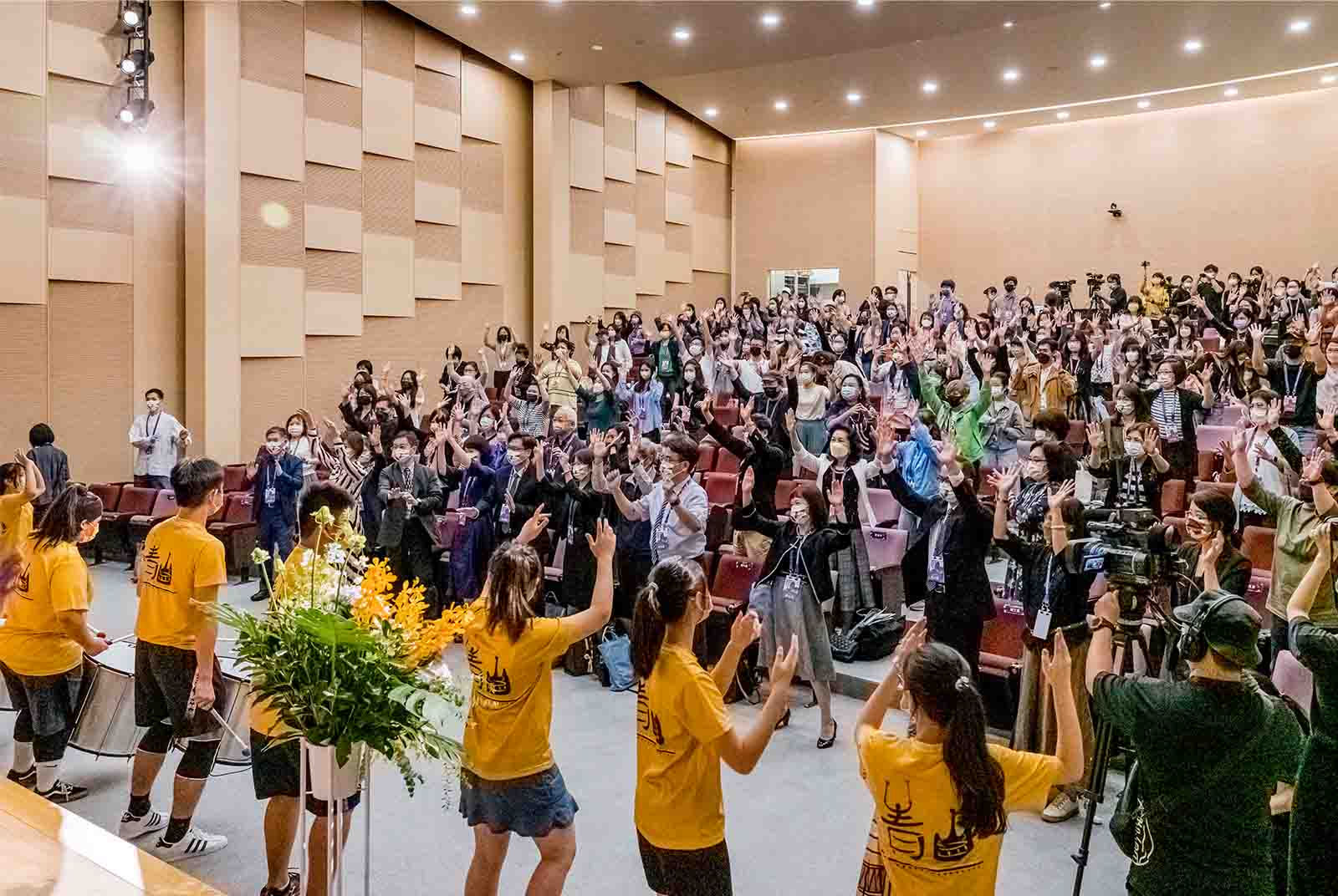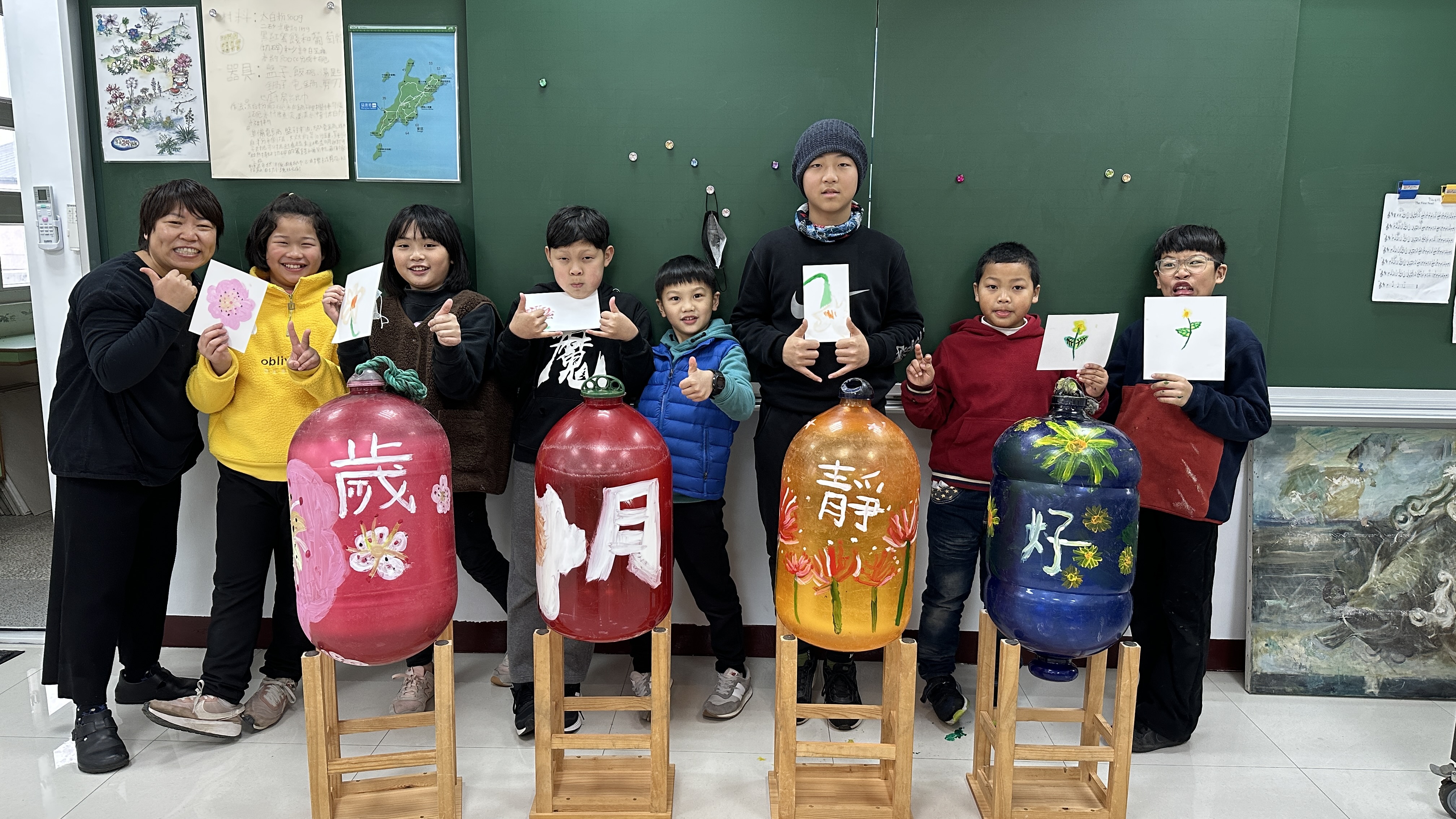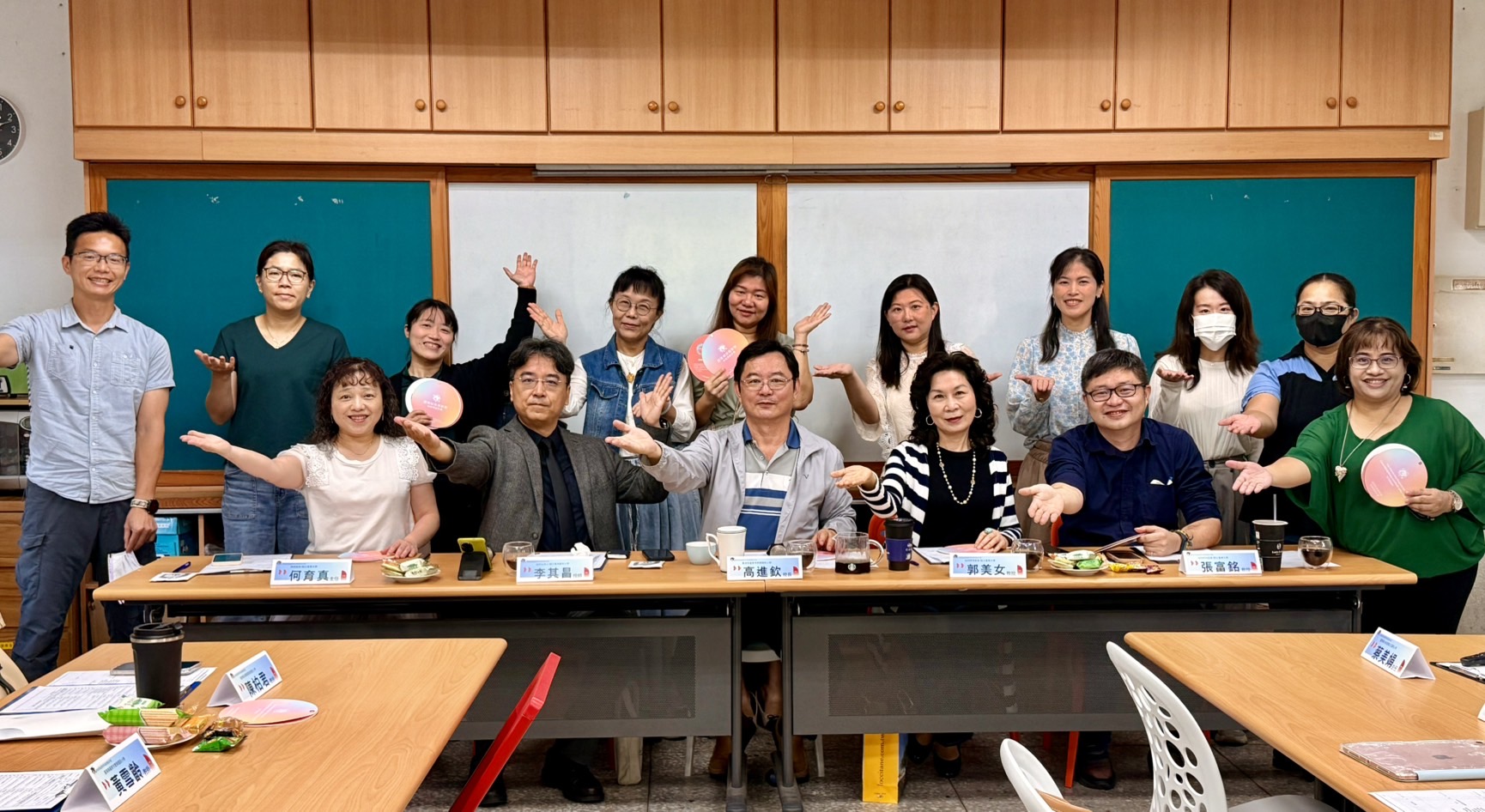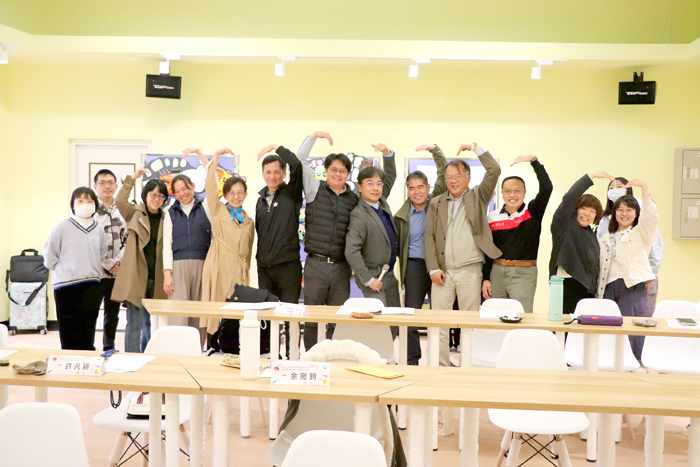During the epidemic, aesthetic education is online! Amid challenges, we take root across domains to jointly shape a better new era.
From Taiwan to other countries around the world, aesthetic education is being vigorously promoted. What exactly is aesthetic education? The "2022 Taiwan Cross-Domain Aesthetic Education International Forum" invites art education scholars from various countries to discuss the international trends of aesthetic education and promotion strategies during the epidemic through online forums, allowing us to get a glimpse of the spirit of aesthetic education.
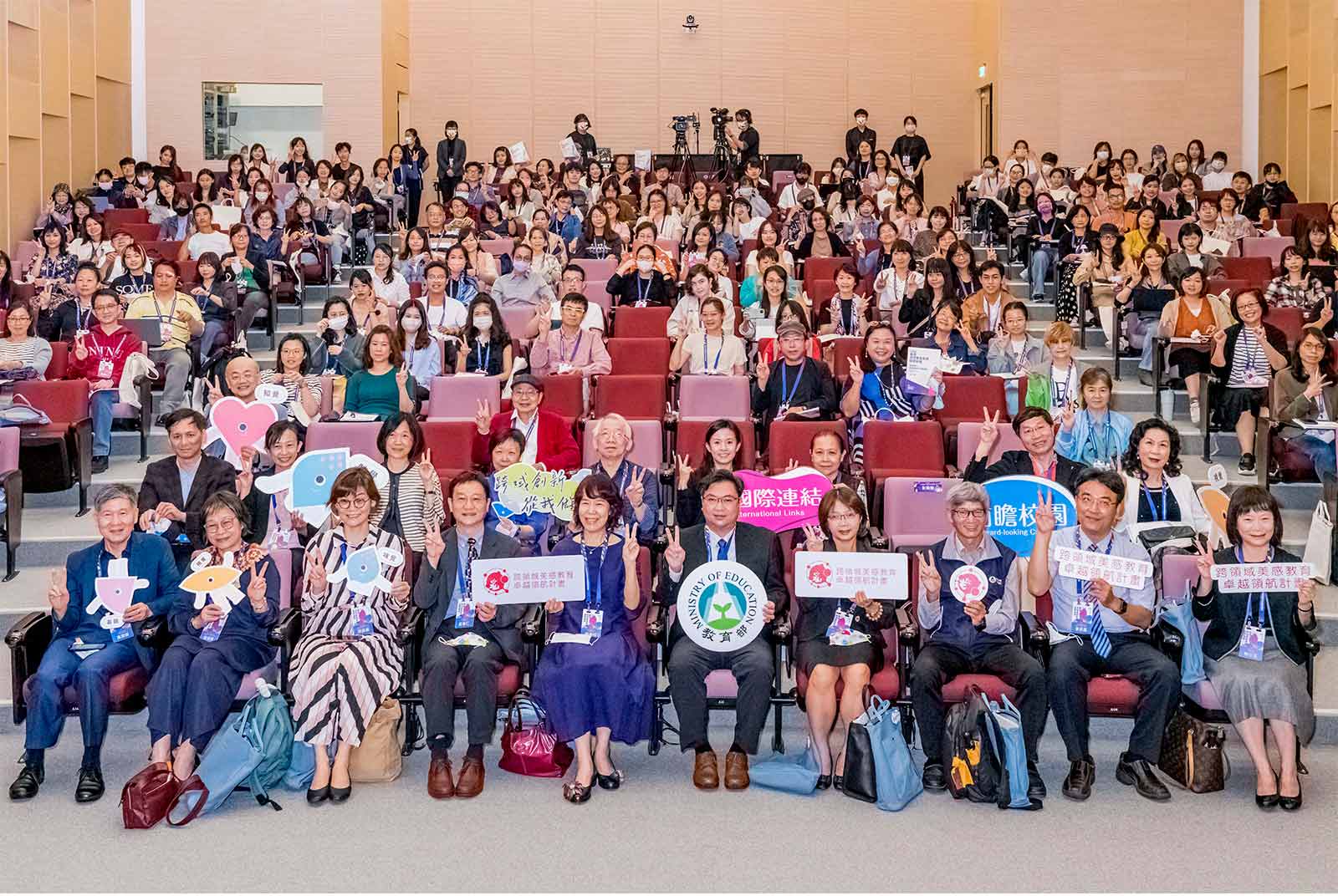
News source: Article Cross-field Aesthetic Education Excellence Pilot ProjectIntegrated Communication Department Planning and Production
News link:<World Magazine>
From the "art classes", "music classes" and "performing arts classes" of the last century to the "aesthetic education" advocated by various parties now, what is the purpose of these courses? Is it to learn skills such as painting, singing, and acting? Or develop children's potential and cultivate future art masters?
The Ministry of Education has been promoting the first phase of the mid- to long-term aesthetic education plan since 2013, with remarkable results. Liao Xingguo, Chief Secretary of the Ministry of Education, delivered a speech at the "2022 Taiwan Cross-Domain Aesthetic Education International Forum" and said that the Ministry of Education has continued to promote the second phase of the medium and long-term aesthetic education five-year plan since 108, and continues to focus on talent cultivation, support systems, and curriculum. In terms of teaching and campus environment, we will comprehensively promote the improvement of aesthetics. Wu Xiaoxia, Director of the Department of Teacher Training and Art Education of the Ministry of Education, also pointed out that the ultimate goal of promoting contemporary aesthetic education is to hope that aesthetic literacy can become the DNA of Taiwan’s new generation of citizens in the 21st century.
Aesthetic education inspires the brain and mind with art
"Art education in schools is only a small part of social art education, but it is of great significance to the well-being and health of the entire society." Former Chairman of the World Alliance for Arts Education (WAAE), Murdoch University Health in Australia Robin Pascoe, an honorary researcher at the School of Education, pointed out clearly in the "2022 Taiwan Cross-Domain Aesthetic Education International Forum". Robin Pascoe believes that art education is not limited to the learning of techniques or skills, but provides learners with creative activities to use art as a creative method to express thinking and emotions in various cultural contexts.
Ellen Winner, a well-known senior researcher at Harvard University's "Project Zero" and emeritus professor of psychology at Boston College, pointed out at an international forum that in the long history of art education, "work orientation" and "process orientation" have appeared successively. Leading to two different routes. The purpose of "work-oriented" teaching is to enable students to learn painting, sculpture and other techniques so that they can create good works. "Process-oriented" advocates inspiring children's various abilities through exploration and experience in the creative process. Therefore, "process-oriented" adopts a progressive teaching perspective of "child-centered" and "learning through play and exploration", which is a way to better leverage the value of art education.
Extending from this, Harvard University's "Project Zero" Research Center proposed the "Studio Thinking" approach, which believes that through artistic creation activities it can help children develop 8 diverse mental habits (Habits of Mind), including observation, understanding, reproduction, Evaluation, extended exploration, the willpower to stay focused and overcome difficulties, and the ability to observe, express and reflect from different perspectives, etc. At the same time, since there are no standardized answers to learning in the art field, it is most suitable for developing children's creativity and problem-solving abilities, and the mental habits acquired in art learning will be transferable to learning in other fields.
Cross-domain sharing of "beauty" Cross-domain aesthetic education in Taiwan
The Ministry of Education’s mid- to long-term second phase of the aesthetic education plan emphasizes that aesthetics should be implemented in all aspects of life and take root from an early age. At the same time, it is also necessary to give full play to the diverse characteristics of the art field and innovate across domains. Professor Zhao Huiling of National Taiwan Normal University, the organizer of the "2022 Taiwan International Forum on Interdisciplinary Aesthetic Education" and the host of the "Interdisciplinary Aesthetic Education Excellence Pilot Project" of the Ministry of Education, pointed out that through the common interweaving of art and non-art subjects, It is expected to cultivate students' core abilities and cross-domain literacy such as imagination, creation, discovery, critical thinking, problem solving, communication and interaction.
From the sharing of various beauty projects in international forums, we can find that the scope of "beauty" is broad, from vision, hearing, body rhythm to the beauty of words, and even awareness of various emotions in one's heart. It is a kind of "beauty" in life. "feeling" experience. Hong Yongshan, a researcher at the Asia-Pacific Aesthetic Education Research Laboratory and the Curriculum and Teaching Research Center of the National Institute of Education in Taiwan, explained: "The importance of cross-domain is no longer limited to a single subject area, but to truly return to life and learn more together. "For example, when the "environmental and ecological aesthetic experience" often found in natural sciences, as well as the "humanistic and cultural aesthetic experience" that may appear in the fields of language, society and art, are injected into the design of aesthetic courses, there will be problems everywhere in life. A deeper level of learning and experience. Another example is the aesthetic intelligent reading of the Ministry of Education's "Aesthetics and Design Curriculum Innovation Project", which enhances the height and breadth of children's view of the world through the construction of text and visual beauty.
This forum also interviewed Wang Bingzhang, who participated in the cross-field aesthetic education excellence pilot program in high school and is now studying in the Department of Civil Engineering at National Taiwan University. He pointed out that the most impressive cross-field learning experience for him was "asking questions together." , go find the answer, and then pursue what you want most in your heart.” Fang Yanxi, a student currently studying at the Department of Advertising at the Chinese Culture University, believes: "There is no need to limit the natural group and the social group. Everyone can cross fields. Aesthetic education is around life." Currently studying at National Taiwan University Yan Junyi from the Department of Nursing even said that he benefited a lot from participating in the cross-disciplinary beauty project: "That period inspired my imagination and writing, and I have more literal feelings about 'beauty'!"
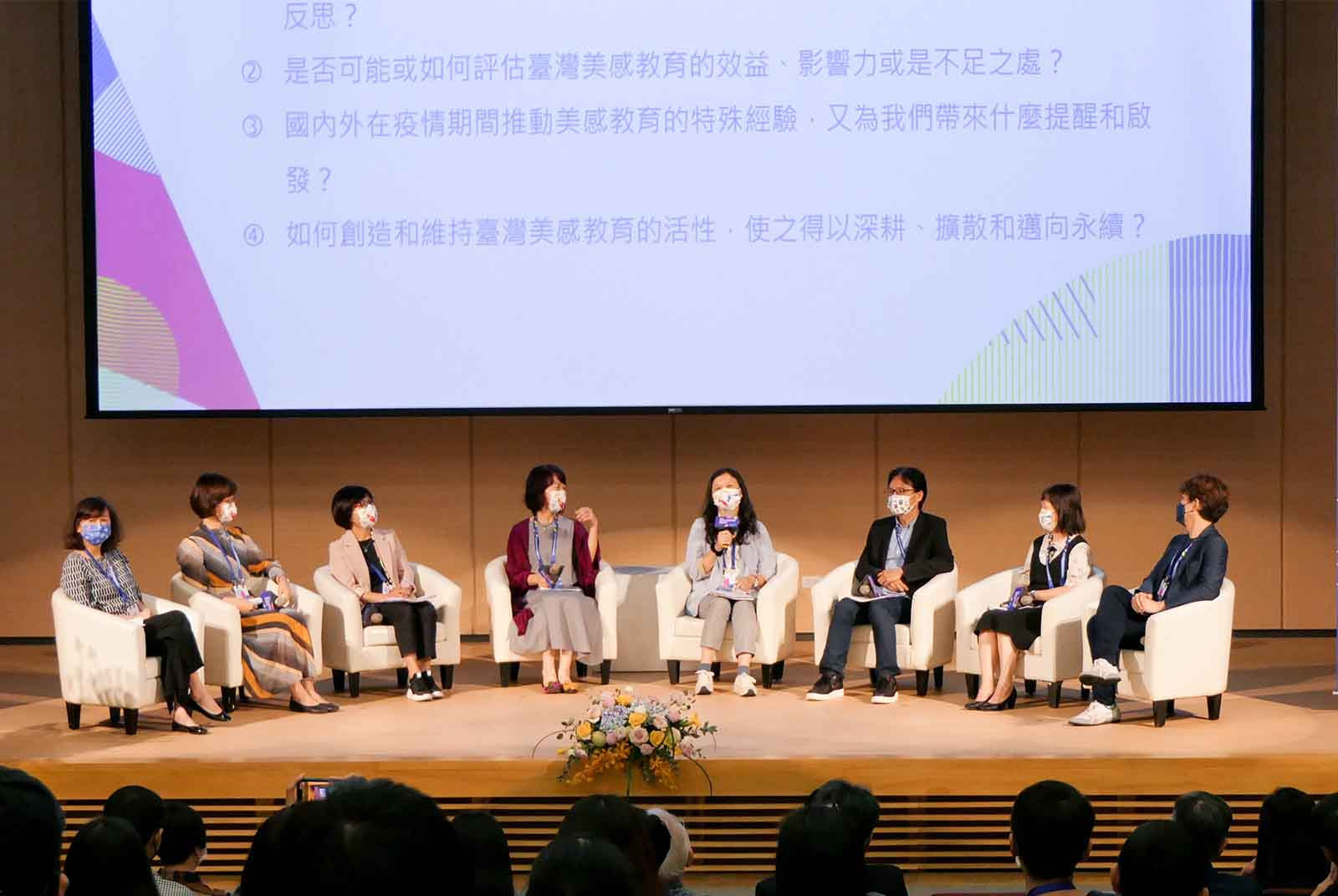
Aspects of international aesthetic education under the epidemic
In the past three years of the epidemic, many schools around the world have been forced to close classes or adopt distance learning methods. So how is aesthetic education carried out? The international forum also specially invited scholars from different countries to share the response and transformation of aesthetic education in various countries to the epidemic.
Kazuhiro Ishizaki, a professor at the Department of Art at the University of Tsukuba in Japan, shared how the school uses online tools for online or hybrid teaching. For example, let students use readily available materials to make collages, allowing everyone to create freely at home, and then take photos of their works and share them with other students online, so that students can also feel the excitement of creation in online courses. Fun and a sense of achievement, shy classmates even reduce their resistance to sharing in physical classes. Professor Ishizaki believes that after the epidemic in the future, it is unlikely to return to the pure physical teaching of the past, and the hybrid online and offline teaching methods will become the promotion model of art education. For example: “In physical teaching, online teaching can also be used. Digital learning history files allow teachers and students to share their learning experiences and deepen their understanding of each other.”
"How to transfer art teaching online is a big challenge during the epidemic." Daniel Harris, associate dean of research and innovation at the School of Education at RMIT University in Melbourne, Australia, said. In addition, the epidemic has also drawn everyone's attention to the healing properties of art that can improve health and well-being. "In times of turmoil and trauma, art education becomes more important." Daniel Harris mentioned that Australian art education institutions provided services during the epidemic. Online resources play an important role, and many online art courses also give students the opportunity to explore art creation "at home." In addition, many art educators have made various attempts to bring new possibilities. "The impact of the epidemic is not all negative. We have seen many wonderful adjustments and innovations in art and aesthetic education come into being."
Janet Barrett, Emeritus Chair Professor at the University of Illinois at Urbana-Champaign, shared the experience of music education in the United States. She mentioned: "The epidemic has disrupted the musical interactions that children find interesting, and music classes have turned into screen time. For orchestra group singing and Performance practice and performance activities have also had a huge impact. "However, we have also seen some new opportunities during the epidemic. For example, students are creating on digital platforms to find more ways to express music, and it also leads students to understand the background context of music. Explore different musical genres and performers. Janet Barrett also specifically mentioned the importance of cross-disciplinary perspectives: "Understanding works of art reflects the time and space context of the time of creation, and also gives students the opportunity to develop critical skills and creative thinking when conducting inquiry."
Karen Neervoort, Dean of the School of Art and Performance at Fontys University of Applied Sciences in the Netherlands, shared how the school has made different attempts to replace traditional learning with digital models. For example, a streaming platform is established so that students’ works can still be exhibited. Karen Neervoort believes, “Looking to the future, we see the different needs that students will have after the epidemic, for example, developing new skills or exploring new problems, which means that from now on, art education is moving in a new direction. Art education The content and teaching methods will be opened to more fields.”
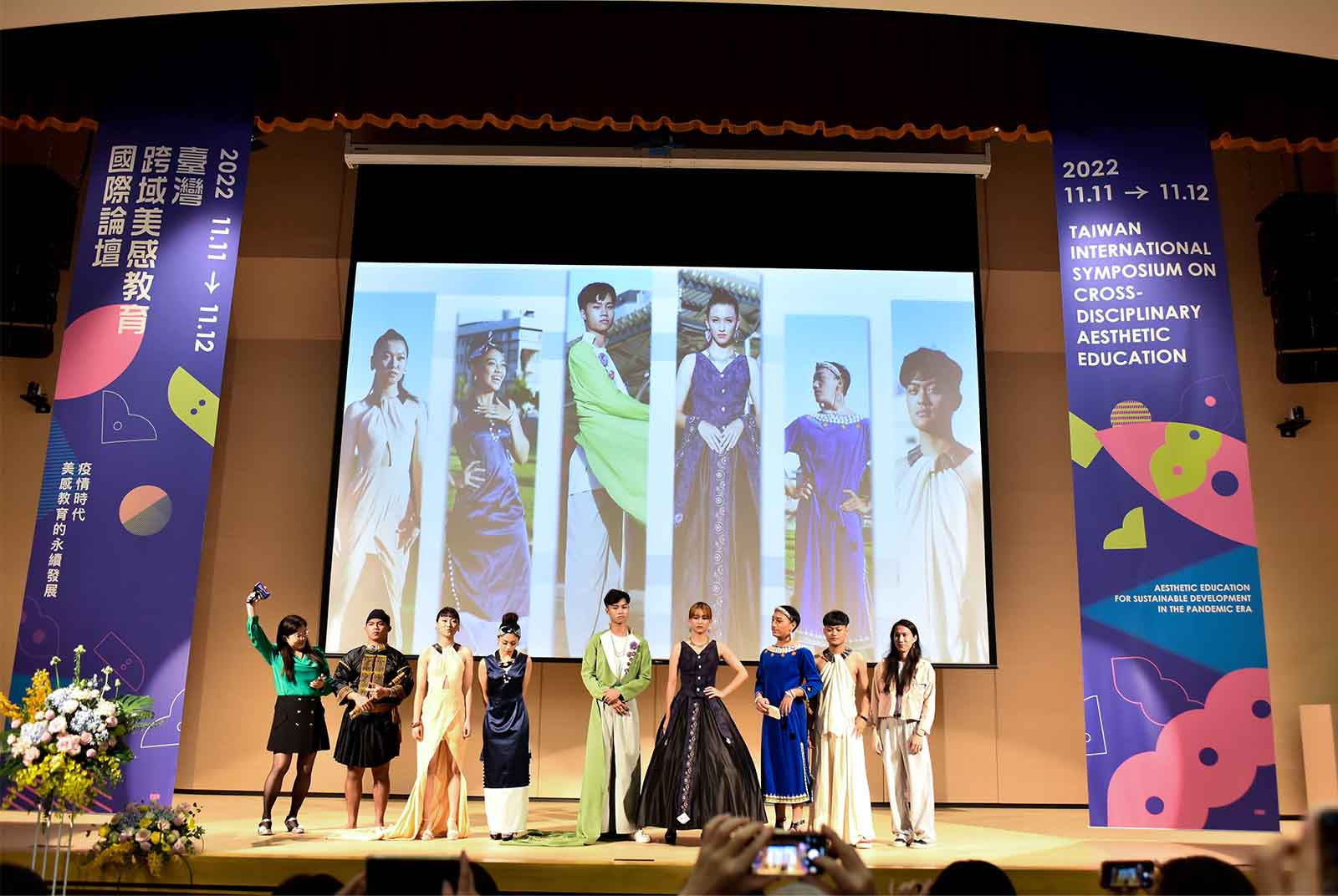
After the epidemic, Taiwan’s cross-disciplinary aesthetic education is blooming
In Taiwan, aesthetic education has never stopped during the epidemic. Teachers and students across the country have overcome difficulties and used cloud and remote technologies to produce many wonderful "hybrid aesthetic courses." It even brings parent-child learning methods into aesthetic courses, so that parents and children can experience the wonderful healing power of art activities during the epidemic era.
Various teams of the Aesthetics Project have also developed a closer model during the epidemic. For example, the courses of the "Aesthetics Learning Community" and the "Aesthetics Education Lectures/Workshops of Normal University" continue to be conducted online. The "Art and Beauty Cultivation Summer Service Program" also inspired different course types. "Art to Find Beauty" uses online or hybrid experiential teaching. Shitang Online Achievements Exhibition" etc. Not only has aesthetic education not stalled during the epidemic, it has further developed new models that span physical distances and multiple fields.
The second phase of the Ministry of Education's mid- and long-term plan for aesthetic education has achieved vigorous development and results, from the establishment of the overall national support system to the cultivation of talents, the promotion of school curriculum activities, and the creation of campus environment. We look forward to the third phase of the aesthetic education project to be launched in 2024 to continue to explore the various possibilities of beauty and continue to use schools at all levels as a base to make Taiwan's aesthetic education continue to move forward.
